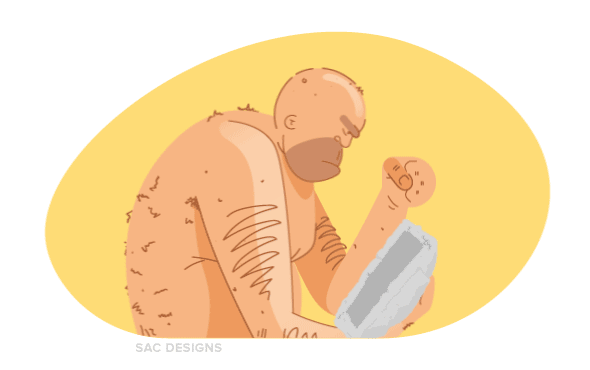
By: Mark Maguire
January 18, 2019design, explainer video, HTML5, interactive design, marketing

In the prehistoric days of the web, animations were mostly fun artifacts. Rarely did they or could they convey complex information, but they were eye catching and loved by many. Though use of the ubiquitous“Here’s Johnny” gifs are still widespread, the transformation of animation over the years has been amazing. Today we see them used for illustrating complex molecular reactions, teaching math and science, as well as for mind bending interactive AI holograms. And the improvements are coming at us at an accelerated pace. One thing that is becoming more apparent is that it will be difficult for companies to ignore the growing universal appeal of animations to attract and retain customers.
By 2020, online videos will make up more than 80% of all consumer internet traffic (85% in the US). (Cisco)
This is especially true when customers and users are faced with the daunting task of trying to understand very complex products, systems and ideas. Even for experts, well versed in a system’s process behaviors, a well-executed animation can go a long way to helping them present the systems inner workings. Let’s face it, who of us wouldn’t rather watch a beautifully designed and fun animation that illustrates the workings of a complex system, than reading through a spec?
Viewers retain 95% of a message when they watch it in a video, compared to 10% when reading it in text. Wirebuzz
Even for those that are inclined to read through specs and journals, a supporting animation can greatly clarify issues that would otherwise be difficult to comprehend, and the use of interaction can enhance its effectiveness. We are starting to see animations incorporated into ebooks. Educational books are leading the way. But just think how much easier would it be if technical books and papers, PhD theses and product descriptions were accompanied by relevant animation(s). From assembling furniture, to practicing open heart surgery, to the design and analysis of full wave bridge rectifiers, the advantage of integrating animations is clear.
As described above, animations come in all shapes, sizes and levels of complexity. There are even free tools and websites that can help. If you are looking for projects that are in need of professional animators and designers, that’s where SAC Designs can help.
We have been involved in creating animations for our customers for the past 20 years. In that time, we have created everything from the simple gifs to the 3D interactive scientific animations showing cancer cell formation and techniques used for their eradication. From the early days until now we have learned a few things. In upcoming blogs we will go more in-depth to our processes, including what we need from the client before we get started, verbal and visual scripts, storyboards, animations, tools, review, and client acceptance.
If you’re dying to know more about animation stay tuned for the rest of our 5 part series about animation.
Part 1. Animation Overview
Part 2. How to Create HTML5 Banner Ad Animations
Part 3. How to Create Interactive HTML5 Animations
Part 4. How to Create Explainer Video Animations
Part 5. How to Create AR/VR Animations
For any of your animation needs, give us a call at 617-209-2201 or email us at info@sacdzn.com